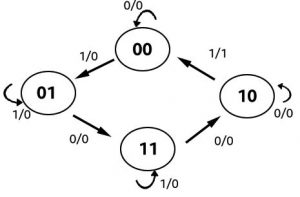Published by: Dikshya
Published date: 13 Mar 2023

POKHARA UNIVERSITY(PU)
| Level: Bachelor | Semester – Fall | Year: 2015 |
| Program: BCIS | Full Marks: 100 | |
| Course: Digital Systems | Pass Marks: 45 | |
| Time:3hrs | ||
| Candidates are required to give their answers in their own words as far as practicable. | ||
| The figures in the margin indicate full marks. | ||
Section “A”
Very Short Answer Questions
| SN | Attempt all the questions. | 10×2 |
| 1 | Convert (67)10 to Gray code. | 2 |
| 2 | State de morgan’s theorem. | 2 |
| 3 | Design 3 input NAND gate using 2 input NAND gate. | 2 |
| 4 | How many flip-flops are there in 5 bits serial out shift registers? | 2 |
| 5 | If there are 2345 inputs un multiplexer. Find number of selection lines and output lines. | 2 |
| 6 | Rechye 8:1 max using two 4:1 max. | 2 |
| 7 | Write advantages of CMOS over TIL. | 2 |
| 8 | Define fan out and fan in? | 2 |
| 9 | What do you mean by ripple counter? | 2 |
| 10 | Define one bit memory. | 2 |
Section “B”
Descriptive Answer Questions
Attempt any six questions. 6X10
11.Convert the following number from the given base to the other bases indicated.
12.Simplify the following expression using Boolean algebra.

F (w, x, y, z) = Σ (0, 1, 4, 6, 10, 11, 12)
D (w, x, y, z) = Σ (2, 3, 6, 9, 15)
Section” C”
Case Study
18.Draw the excitation table for RS, JK, T and D flipflop. Design a sequential machine for the state diagram shown in figure below. (20)

These are the questions by Pokhara University Fall 2015 Digital Systems.